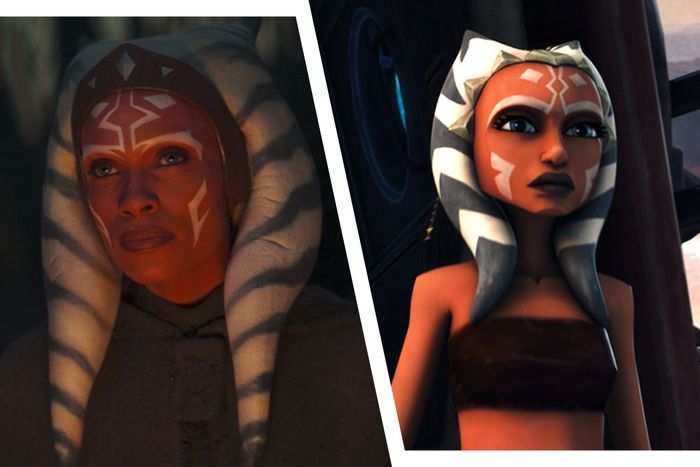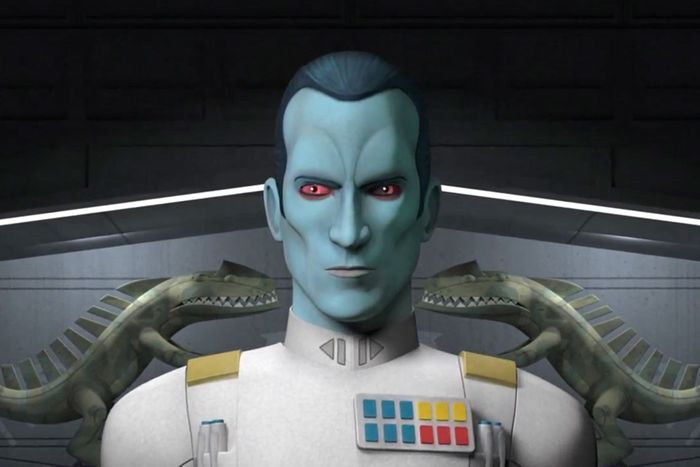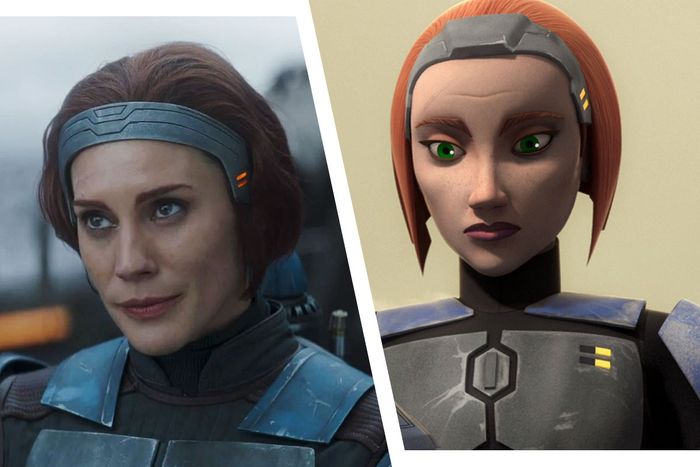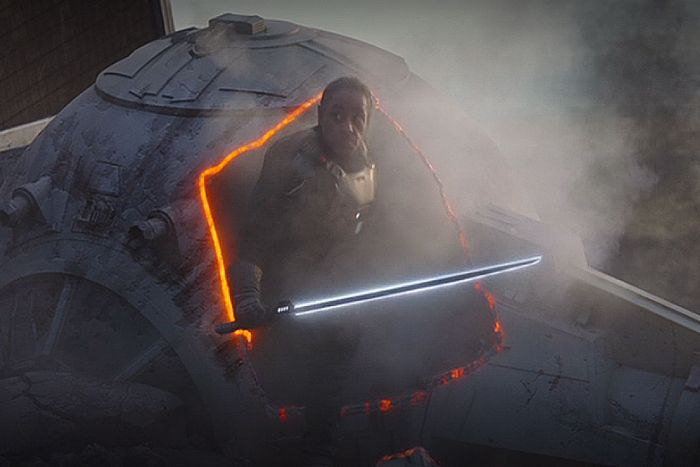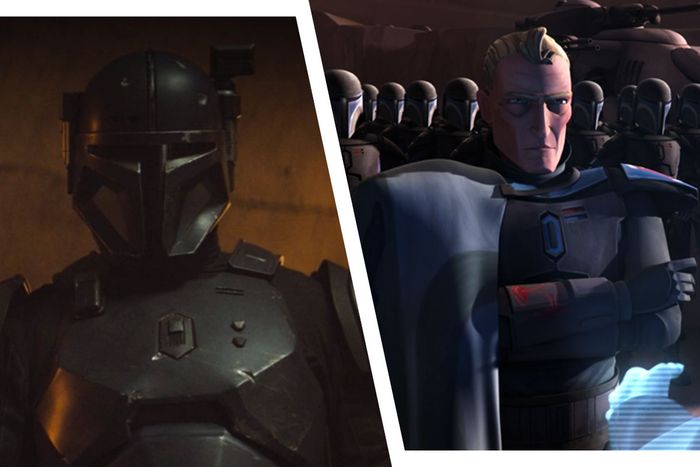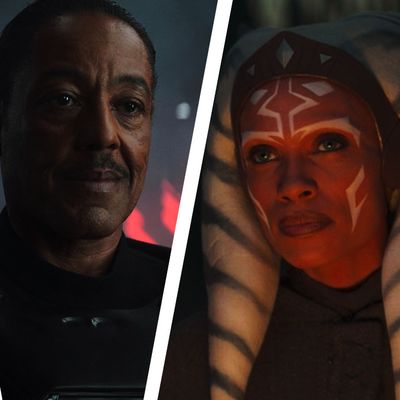
The currently airing season of Disney+’s The Mandalorian has been one of the few things this year that’s approached the blockbuster TV and movie events that we expected before the pandemic hit. The basic arc of the second season charts Din Djarin (a.k.a. the Mandalorian) as he attempts to reunite The Child Baby Yoda Grogu with his kind. While the objectives of each episode may be relatively simple, there are Easter eggs and connections to the extended universe of this show that can be hard to follow for those who don’t have the same knowledge base as those who attend Lucasfilm fan events. In particular, season two has increasingly converged with the canon of the animated series The Clone Wars and Rebels, two shows written by Mandalorian writer-director Dave Filoni.
Fans of this Star Wars series who have only seen the nine feature films know just a small fraction of a massive story, and charting how The Mandalorian connects with Star Wars: The Clone Wars and Star Wars: Rebels could make it a richer experience, while also giving viewers hints about where it’s going. Let us guide the way, via season two’s biggest crossover characters/mythical weapons.
Ahsoka Tano
This is the big one. The gasp heard around the Star Wars universe when Ahsoka Tano’s light sabers pierced through the fog at the beginning of “Chapter 13: The Jedi” was loud. The iconic character had been rumored to join the Mandalorian universe, and many believe she may even get her own spinoff series. Played by Rosario Dawson, Tano is found by the Din Djarin on the planet of Corvus, leading to questions and speculation about where this character goes next.
First, who is she? Ahsoka Tano had never appeared in a live-action Star Wars movie (although she can be heard in The Rise of the Skywalker), but fans of the animated shows set in this universe know her well. She was introduced in The Clone Wars, revealing that she was Anakin Skywalker’s Padawan, given to him by Master Yoda after the action of Attack of the Clones. At this time in the legacy, Anakin himself is remarkably young, but Yoda hopes that teaching Tano will help them both grow. (He was kind of wrong there.) The Clone Wars helps fill in the gaps about Tano and Anakin’s journey, and the brilliantly designed character became a fan favorite. She’s tough but also vulnerable, one of the great heroes in this universe.
She turned out to be much more than just a counter to Anakin in the animated series, developing her own narrative, rich backstory, and loyal fan base. A turning point came when she was framed for a crime and dismissed by the Order. She ended up a rebel Jedi, someone without direct loyalty to a side, which is reflected in her mercenary-esque appearance in The Mandalorian. Keep in mind that most of Tano’s canonical arc in the animated series happened before the action of Revenge of the Sith. In that film, Palpatine ordered the destruction of all of the Jedi, which would have included Tano, but she survived due to some time-travel, alternate-universe stuff that would take its own separate feature to explain.
Suffice it to say that Tano’s escape from Order 66 led to the action of Rebels, another Star Wars animated series, wherein she worked for the Rebel Alliance while Luke was still whining to Aunt Beru and Uncle Owen. In this arc, Tano learned of the betrayal by her master Anakin, which likely feeds into her feelings about Jedis and training Grogu (a.k.a. Baby Yoda) — she’s seen how wrong that can go.
So, how did she get to Corvus? She was saved from destruction at the hands of Vader by a Padawan named Ezra Bridger, who was last seen with Grand Admiral Thrawn, whom Tano is trying to find on The Mandalorian (which, as a reminder, takes place five years after the events of Return of the Jedi). Bridger was the center of Rebels and feels like an inevitable character on The Mandalorian. At the end of Rebels, set after the prequel films but before the original trilogy, Tano has returned from something called the World Between Worlds, and sets out to find Bridger with a Mandalorian named Sabine Wren. However, Filoni has suggested that “The Jedi” may take place before that event. Given how different Tano looks at the end of Rebels to how she appears on Disney+, it does feel like there are some plot holes that could take an entire series to fill in.
Grand Admiral Thrawn
So who exactly is Ahsoka Tano looking for when she name-drops Grand Admiral Thrawn? Also known as Mitth’raw’nuruodo, Thrawn is of the species Chiss, and his origin actually dates back to a 1991 novel called Heir to the Empire by Timothy Zahn. In animated terms, he first appeared in the third-season premiere of Star Wars: Rebels way back in 2016. At that point, he’s the leader of an Imperial effort to quash the rebellion, working with Grand Moff Tarkin. Promoted by Tarkin over other Imperials, Thrawn is presented as a masterful strategist, reportedly a combination of various military leaders as distinct as Erwin Rommel and Alexander the Great.
While it looked like Thrawn and Bridger may have died in Rebels, explaining his absence by the time A New Hope rolls around, Filoni said in a behind-the-scenes YouTube series that they both survived. The villain has been spun off into his own line of canonical novels by Zahn, and comic books bear his name, so it has resonance when it comes up in The Mandalorian, and he feels like someone who could easily enter this universe in upcoming chapters, probably with Ezra Bridger — or at least with knowledge of what happened to him. Will Thrawn and Bridger join The Mandalorian or be saved for what feels like the inevitable Ahsoka Tano Variety Show? Only time will tell.
Bo-Katan Kryze
The great Katee Sackhoff appeared in “Chapter 11: The Heiress,” playing the same character she voiced on Star Wars: Rebels, much to the delight of fans around the world. So who is the bad-ass leader of the Nite Owls who first appeared on the fourth season of The Clone Wars? In the animated universe, Bo-Katan Kryze is a member of a Mandalorian group, during the Clone Wars, called Death Watch. After Darth Maul (remember him?) is removed from Mandalore, she leads the planet, but refuses to follow the orders of Emperor Palpatine, leading to a civil war. In the end, she gains possession of a powerful and symbolic weapon called the Darksaber from Sabine Wren and agrees to lead their kind, but she’s looking for it again in “The Heiress” because, well, someone else has it …
Moff Gideon
One of the biggest gasp moments in The Mandalorian came at the end of season one when Giancarlo Esposito’s villainous Moff Gideon cut through his ship with the Darksaber! Gideon himself is not an animated character, but that bad-ass weapon connects the new show back to the animated canon. It was created by Tarre Vizsla, the first Mandalorian ever made a Jedi, but it changed hands many times in the centuries since. The ancient weapon became a symbol of power during the battles on Mandalore, ultimately ending up in the hands of Bo-Katan when she accepted her leadership. However, she clearly has lost possession of it, and currently leads her Nite Owls in an attempt to find it. How Moff Gideon got his hands on it and what he plans to do with it next should be a major part of the future of The Mandalorian.
Clan Vizsla
The Vizsla name means a lot to fans of the animated Star Wars universe, but so far is really just a cameo in The Mandalorian, one played by Jon Favreau himself. Way back in “Chapter 3: The Sin,” Din Djarin delivers The Child to The Client. Before that, he’s in the hideout of the Mandalorians, and one named Paz Vizsla (voiced by Favreau) admonishes the hero for working with the Empire. After he changes his mind and retrieves Baby Yoda, Paz helps come to the rescue. The Vizsla name has a legacy in this universe. As mentioned, Tarre Viszla created the Darksaber, and the Vizsla clan is one of the main factions of Mandalorians. And Favreau actually voiced Pre Vizsla on The Clone Wars. Everything comes full circle. (Note: The original airing of “The Sin” had the character credited as “Vizla” with a missing ‘s,’ leading to all kinds of speculation, but it has since been corrected.)
Credit: Other than the sources directly linked in the piece, thanks to Vanity Fair and Fandom for general assistance with this feature.



